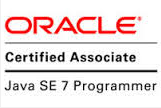One of the most debated topic on Java is whether the method arguments are pass by reference or pass by value. In this tutorial, I would like to explain the same old concept with respect to the OCAJP certification. In Java, everything is pass by value. Here is the exam objective for OCAJP 7 and OCAJP …

